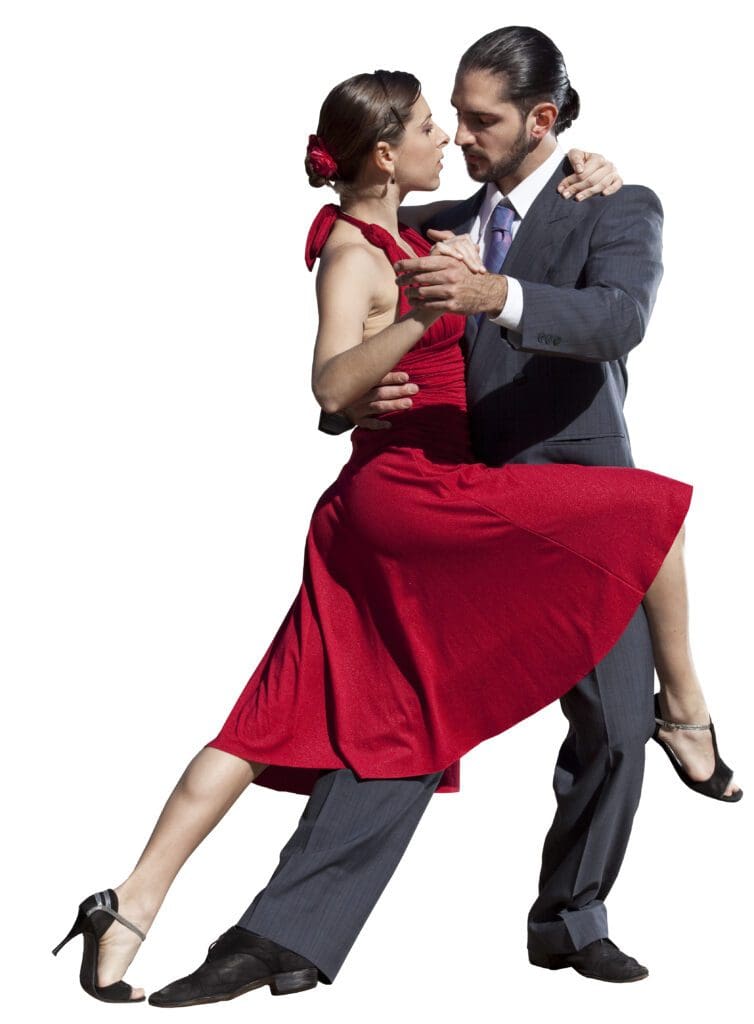Argentine Tango
Argentine Tango History
Argentine Tango, a dance of deep emotion and complexity, has a rich history rooted in the cultural melting pot of Buenos Aires:
Late 19th Century Origins:
- Originating in the late 1800s, Argentine Tango began in the lower-class districts of Buenos Aires, Argentina.
- It was influenced by the music and dance styles of European immigrants, African slaves, and native Argentinians.
Early 20th Century Development:
- The dance developed in the urban slums as a fusion of various cultural influences.
- Initially, it was shunned by the upper classes but gradually gained acceptance.
International Popularity:
- In the early 20th century, Tango spread to Europe and then worldwide, becoming a global phenomenon.
- This period saw a sanitization and stylization of the dance to appeal to European tastes.
Golden Age:
- The 1930s to 1950s is known as the Golden Age of Tango, marked by its immense popularity in Argentina.
- Tango music also evolved, with orchestras and singers like Carlos Gardel becoming iconic.
Mid-20th Century Decline and Revival:
- In the mid-20th century, Tango’s popularity declined due to political and social changes in Argentina.
- However, in the 1980s, a revival began, spurred by renewed interest in traditional culture and global fascination.
Modern Day:
- Today, Argentine Tango is cherished worldwide, known for its intimate embrace, intricate footwork, and emotional depth.
- It continues to evolve, incorporating modern elements while maintaining its traditional soul.
In summary, Argentine Tango has a storied past, emerging from Buenos Aires’ melting pot and growing into an internationally revered dance, celebrated for its passion, complexity, and expressive power.
Argentine Tango Characteristics
- Argentine Tango is a passionate, intimate dance known for its close embrace, intricate footwork, and expressive movements. It emphasizes a strong connection between partners, fluidity, and improvisation, allowing dancers to communicate subtly through their bodies. The dance is characterized by its dramatic and sensual nature, often reflecting a narrative of longing and emotion.
Argentine Tango Music Information
Argentine Tango music, integral to the dance’s expressive and emotional nature, has several key characteristics:
Rhythm and Tempo: The tempo of Tango music varies, often slower to allow for the dance’s intricate movements and emotional expression.
Time Signature: Tango music typically uses a 2/4 or 4/4 time signature, with a rhythmic pattern that can be complex and varied.
Instrumentation: Traditional Tango music is characterized by the use of the bandoneón (a type of accordion), along with violins, piano, and double bass. Modern Tango may include electronic instruments or more diverse orchestrations.
Melodic Style: Tango melodies are often dramatic and melancholic, reflecting the dance’s passionate and emotional nature.
Musical Dynamics: The music can range from soft and subtle to powerful and intense, mirroring the dynamic range of the dance itself.
These elements combine to create the unique atmosphere of Argentine Tango music, driving the dance’s deeply expressive and nuanced movements.
